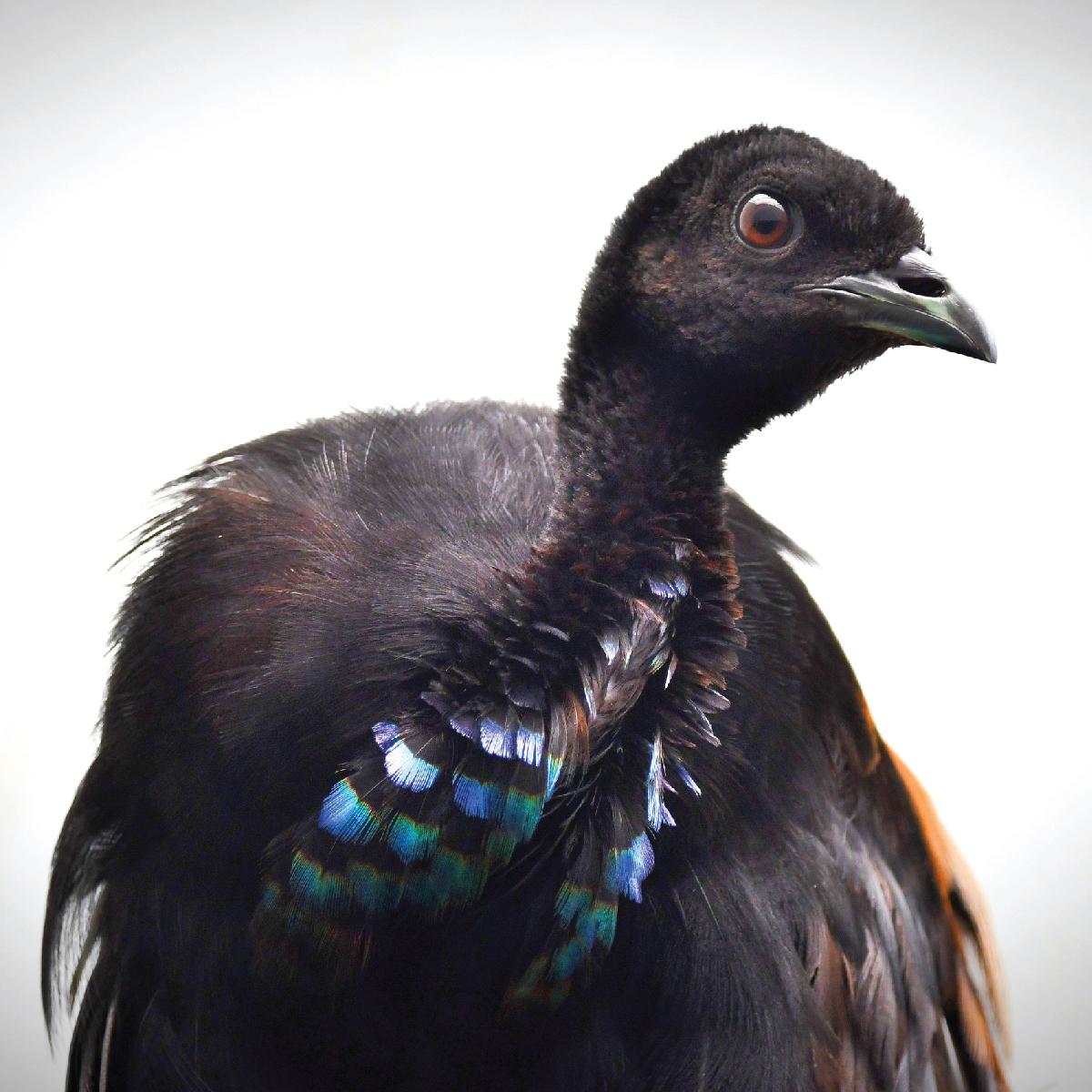
Grey-winged Trumpeter
Psophia crepitans
Did you know?
- Grey-winged trumpeters are part of the Psophiidae family, which they share with other birds known as trumpeters.
- They have dramatically arched wings, which make them look larger than their actual size.
- They eat fruit and pass seeds intact, helping disperse fruit trees in the forest.
- Their favorite foods include berries, grasshoppers, centipedes and spiders.
- A female lays about seven eggs.
Secret Dancers
These elusive birds are found in mature moist tropical forests, away from all human activity. Trumpeters gather in large flocks in forest clearings to perform elaborate and noisy courtship dances. These involve much strutting and leaping, and sometimes even somersaulting. They tend to nest in large tree cavities. Females typically lay about seven eggs.
Habitat in Peril
Trumpter's population status is currently not threatened. They are important seed disperses in the forest. However, their habitat, the dense portions of the Amazon rainforest, is being lost at an alarming rate.
Threat Level
- Unknown
- Common
- Near Threatened
- Threatened
- Endangered
- Critically Endangered
- Extinct in the Wild
Common
The Grey-winged Trumpeter is widespread and abundant.
Range
Northern and central South America
Habitat
Humid forests

We care about grey-winged trumpeters
The Saint Louis Zoo supports grey-winged trumpeters in the Bird House and
Bird Garden. Learn more about how we are helping wildlife around the world.
Find this animal in Historic Hill

SAINT LOUIS ZOO ZONE
Historic Hill
Historic Hill is a lovely stroll through one of the oldest parts of the Saint Louis Zoo. From the 1904 World’s Fair Flight Cage to the Spanish architectural flavor of the 1920s in the Bird House, Primate House and Herpetarium to the finishing touches of our thoroughly modern exhibits, this area of the Zoo has a unique ambiance and a nostalgic history that make it a great destination.

